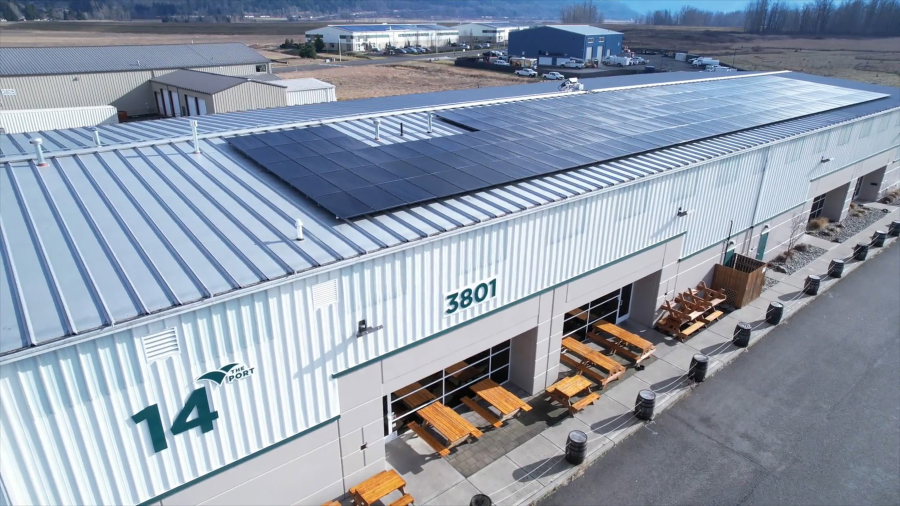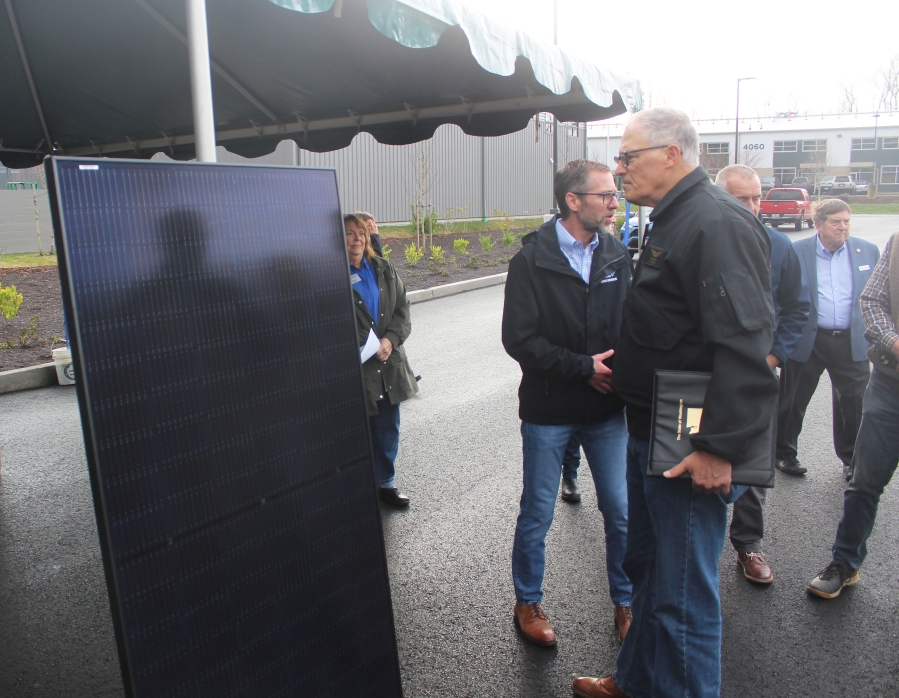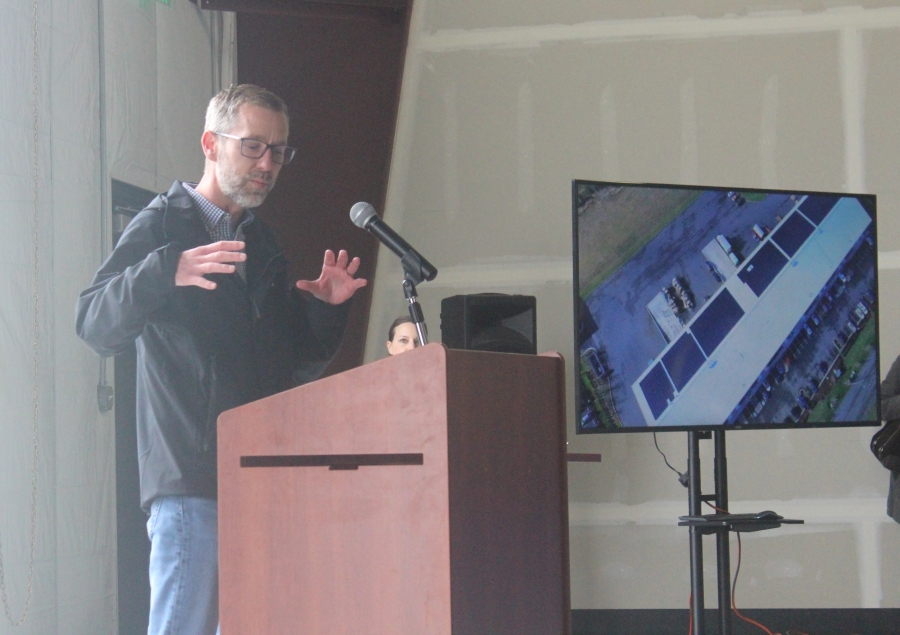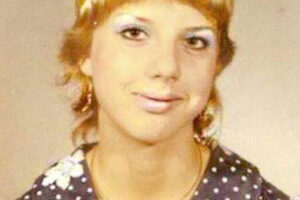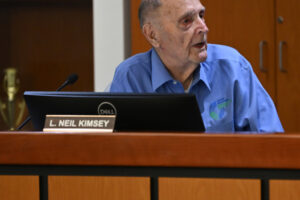Clark Public Utilities’ (CPU) Community Solar East, a 799-kilowatt solar array at the Port of Camas-Washougal’s industrial park, has been selected as one of 12 winners of the 2024 Washington State Department of Commerce (DOC) Governor’s Smart Communities awards, which recognize local governments and their partners for exceptional land use planning and development.
“Community Solar East demonstrates what great outcomes can be achieved for our communities, individuals and environment when public organizations collaborate,” said CPU Chief Executive Officer/General Manager Lena Wittler. “We’re grateful for the hard work and creativity everyone brought to this partnership from day one.”
Community Solar East was honored in the awards’ Smart Climate Strategies category, which recognizes local plans, policies, programs and/or actions addressing community climate impacts. The awards, which also highlight achievements in visioning, partnerships, projects, housing, and equity, “highlight each step in the local planning process and the hard work, collaboration and citizen engagement it takes to accomplish these community-led goals,” according to a news release.
“These awards are a constant reminder that work on our state’s most important issues takes place at a community level,” DOC Director Mike Fong said in the news release. “From housing to climate to equity, we are proud to see these transformative efforts taking place every year, strengthening our communities.”
In 2022, the Port partnered with CPU to install solar panels on five buildings in the Port’s industrial park. Using a concept known as virtual net metering, customers can participate in a renewable energy solution that pays them back with financial energy credits towards their electric bill.


